HSBC 2004 Annual Report Download - page 101
Download and view the complete annual report
Please find page 101 of the 2004 HSBC annual report below. You can navigate through the pages in the report by either clicking on the pages listed below, or by using the keyword search tool below to find specific information within the annual report.-
 1
1 -
 2
2 -
 3
3 -
 4
4 -
 5
5 -
 6
6 -
 7
7 -
 8
8 -
 9
9 -
 10
10 -
 11
11 -
 12
12 -
 13
13 -
 14
14 -
 15
15 -
 16
16 -
 17
17 -
 18
18 -
 19
19 -
 20
20 -
 21
21 -
 22
22 -
 23
23 -
 24
24 -
 25
25 -
 26
26 -
 27
27 -
 28
28 -
 29
29 -
 30
30 -
 31
31 -
 32
32 -
 33
33 -
 34
34 -
 35
35 -
 36
36 -
 37
37 -
 38
38 -
 39
39 -
 40
40 -
 41
41 -
 42
42 -
 43
43 -
 44
44 -
 45
45 -
 46
46 -
 47
47 -
 48
48 -
 49
49 -
 50
50 -
 51
51 -
 52
52 -
 53
53 -
 54
54 -
 55
55 -
 56
56 -
 57
57 -
 58
58 -
 59
59 -
 60
60 -
 61
61 -
 62
62 -
 63
63 -
 64
64 -
 65
65 -
 66
66 -
 67
67 -
 68
68 -
 69
69 -
 70
70 -
 71
71 -
 72
72 -
 73
73 -
 74
74 -
 75
75 -
 76
76 -
 77
77 -
 78
78 -
 79
79 -
 80
80 -
 81
81 -
 82
82 -
 83
83 -
 84
84 -
 85
85 -
 86
86 -
 87
87 -
 88
88 -
 89
89 -
 90
90 -
 91
91 -
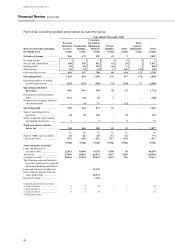 92
92 -
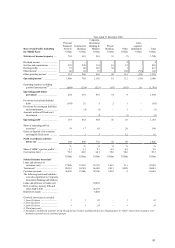 93
93 -
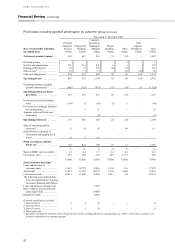 94
94 -
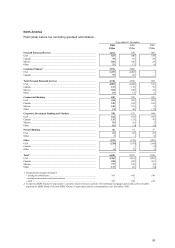 95
95 -
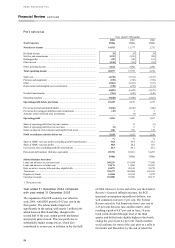 96
96 -
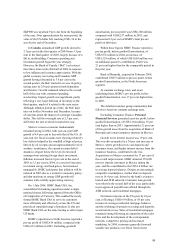 97
97 -
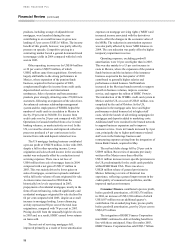 98
98 -
 99
99 -
 100
100 -
 101
101 -
 102
102 -
 103
103 -
 104
104 -
 105
105 -
 106
106 -
 107
107 -
 108
108 -
 109
109 -
 110
110 -
 111
111 -
 112
112 -
 113
113 -
 114
114 -
 115
115 -
 116
116 -
 117
117 -
 118
118 -
 119
119 -
 120
120 -
 121
121 -
 122
122 -
 123
123 -
 124
124 -
 125
125 -
 126
126 -
 127
127 -
 128
128 -
 129
129 -
 130
130 -
 131
131 -
 132
132 -
 133
133 -
 134
134 -
 135
135 -
 136
136 -
 137
137 -
 138
138 -
 139
139 -
 140
140 -
 141
141 -
 142
142 -
 143
143 -
 144
144 -
 145
145 -
 146
146 -
 147
147 -
 148
148 -
 149
149 -
 150
150 -
 151
151 -
 152
152 -
 153
153 -
 154
154 -
 155
155 -
 156
156 -
 157
157 -
 158
158 -
 159
159 -
 160
160 -
 161
161 -
 162
162 -
 163
163 -
 164
164 -
 165
165 -
 166
166 -
 167
167 -
 168
168 -
 169
169 -
 170
170 -
 171
171 -
 172
172 -
 173
173 -
 174
174 -
 175
175 -
 176
176 -
 177
177 -
 178
178 -
 179
179 -
 180
180 -
 181
181 -
 182
182 -
 183
183 -
 184
184 -
 185
185 -
 186
186 -
 187
187 -
 188
188 -
 189
189 -
 190
190 -
 191
191 -
 192
192 -
 193
193 -
 194
194 -
 195
195 -
 196
196 -
 197
197 -
 198
198 -
 199
199 -
 200
200 -
 201
201 -
 202
202 -
 203
203 -
 204
204 -
 205
205 -
 206
206 -
 207
207 -
 208
208 -
 209
209 -
 210
210 -
 211
211 -
 212
212 -
 213
213 -
 214
214 -
 215
215 -
 216
216 -
 217
217 -
 218
218 -
 219
219 -
 220
220 -
 221
221 -
 222
222 -
 223
223 -
 224
224 -
 225
225 -
 226
226 -
 227
227 -
 228
228 -
 229
229 -
 230
230 -
 231
231 -
 232
232 -
 233
233 -
 234
234 -
 235
235 -
 236
236 -
 237
237 -
 238
238 -
 239
239 -
 240
240 -
 241
241 -
 242
242 -
 243
243 -
 244
244 -
 245
245 -
 246
246 -
 247
247 -
 248
248 -
 249
249 -
 250
250 -
 251
251 -
 252
252 -
 253
253 -
 254
254 -
 255
255 -
 256
256 -
 257
257 -
 258
258 -
 259
259 -
 260
260 -
 261
261 -
 262
262 -
 263
263 -
 264
264 -
 265
265 -
 266
266 -
 267
267 -
 268
268 -
 269
269 -
 270
270 -
 271
271 -
 272
272 -
 273
273 -
 274
274 -
 275
275 -
 276
276 -
 277
277 -
 278
278 -
 279
279 -
 280
280 -
 281
281 -
 282
282 -
 283
283 -
 284
284 -
 285
285 -
 286
286 -
 287
287 -
 288
288 -
 289
289 -
 290
290 -
 291
291 -
 292
292 -
 293
293 -
 294
294 -
 295
295 -
 296
296 -
 297
297 -
 298
298 -
 299
299 -
 300
300 -
 301
301 -
 302
302 -
 303
303 -
 304
304 -
 305
305 -
 306
306 -
 307
307 -
 308
308 -
 309
309 -
 310
310 -
 311
311 -
 312
312 -
 313
313 -
 314
314 -
 315
315 -
 316
316 -
 317
317 -
 318
318 -
 319
319 -
 320
320 -
 321
321 -
 322
322 -
 323
323 -
 324
324 -
 325
325 -
 326
326 -
 327
327 -
 328
328 -
 329
329 -
 330
330 -
 331
331 -
 332
332 -
 333
333 -
 334
334 -
 335
335 -
 336
336 -
 337
337 -
 338
338 -
 339
339 -
 340
340 -
 341
341 -
 342
342 -
 343
343 -
 344
344 -
 345
345 -
 346
346 -
 347
347 -
 348
348 -
 349
349 -
 350
350 -
 351
351 -
 352
352 -
 353
353 -
 354
354 -
 355
355 -
 356
356 -
 357
357 -
 358
358 -
 359
359 -
 360
360 -
 361
361 -
 362
362 -
 363
363 -
 364
364 -
 365
365 -
 366
366 -
 367
367 -
 368
368 -
 369
369 -
 370
370 -
 371
371 -
 372
372 -
 373
373 -
 374
374 -
 375
375 -
 376
376 -
 377
377 -
 378
378
 |
 |
99
in increased commissions from futures transactions,
while structured finance and HSBC Amanah
benefited from higher transaction fees and new
deals. In Global Transaction Banking, higher
payment and cash management revenues reflected an
increase in volumes. Dealing profits benefited from a
reduced level of losses in respect of mortgage
hedging activities transacted on behalf of other
HSBC customer groups. These transactions resulted
in an offsetting reduction in other income. Although
credit spread volatility was relatively low,
movements in individual corporate spreads,
primarily in the industrials sector, adversely affected
corporate bond trading revenues. Global Markets
continued to benefit from the previous year’ s
expansion of derivatives capabilities and higher
profits from improved marketing and delivery of
structured solutions. Proprietary trading revenues
increased, mainly through profits on long futures
positions and foreign exchange gains which arose
from successful positioning against the weakening
US dollar. Foreign exchange also benefited from a
higher volume of customer transactions.
In Mexico, earnings from debt trading fell as
interest rates rose during the year, while in Canada,
higher fees from securities sales and corporate
finance reflected improved market sentiment in local
equity markets. Foreign exchange income in Canada
grew by 10 per cent in response to the continued
volatility of the Canadian and US dollars.
Operating expenses, before goodwill
amortisation, of US$1,014 million rose by 31 per
cent, of which 12 per cent related to costs in Bank of
Bermuda. In New York, the significant expansion of
the Corporate Investment Banking and Markets’
business resulted in an increase of some 300 in
headcount and a corresponding rise in salary costs.
Incentive compensation also rose, largely due to the
costs of recruiting and retaining the high quality staff
needed to deliver the business strategy. Key hires
within the expanded complement included the
establishment of a mergers and acquisitions and
advisory group, and product teams to develop asset-
backed and mortgage-backed securitisation and
trading. Non-staff costs grew correspondingly and
included investment in technology to support the
new business streams and the related control
environment.
A net release of provisions for bad and doubtful
debts reflected a significant improvement in credit
quality as corporate restructuring and refinancing
was facilitated by the better economic conditions.
This resulted in releases and recoveries across a
number of sectors.
Private Banking contributed a pre-tax profit,
before goodwill amortisation, of US$66 million, an
increase of 6 per cent on the result achieved in 2003.
Good progress was made in the integration of Bank
of Bermuda’s Private Client Services business,
which added an onshore banking capability in
Bermuda, and complementary offshore and trust
products and services to HSBC’s North American
operations. In aggregate, Bank of Bermuda’s North
American Private Banking operations added
US$2 million to pre-tax profits, before goodwill
amortisation, in 2004.
Net interest income increased by 37 per cent,
due largely to balance sheet growth. Strong growth
in customer loans, which were 50 per cent higher
than in 2003, reflected the success of the insurance
premium financing business, an expanded customer
base, and growth in secured borrowing by clients to
invest in higher-yielding assets or funds. The larger
customer base resulted from an expansion of Private
Banking’s geographical presence, and cross-referrals
generated through the alignment of Private
Banking’ s operations with other customer groups.
This contributed to an increase in average customer
deposits.
Other operating income was 4 per cent below
that achieved in 2003 but was 23 per cent lower
excluding the Bank of Bermuda. The fall in other
operating income was mainly driven by client
anticipation of interest rate rises, which reduced
demand for interest-rate-linked structured products,
and sales of fixed interest bonds. WTAS increased
revenue despite subdued demand for tax planning
services. As a consequence of restrictions placed on
the personal tax practices in the major accounting
firms engaged in providing audit services, WTAS
increased both its customer base and the number of
fee-generating staff. Cross-referrals also grew.
Operating expenses, before goodwill
amortisation and excluding Bank of Bermuda, were
broadly flat compared with 2003. Savings were
generated from the continuing alignment of
international and domestic client servicing units and
from operational efficiencies in WTAS.
The gain on disposal of investments and
tangible fixed assets reflected the sale of seed capital
holdings.
